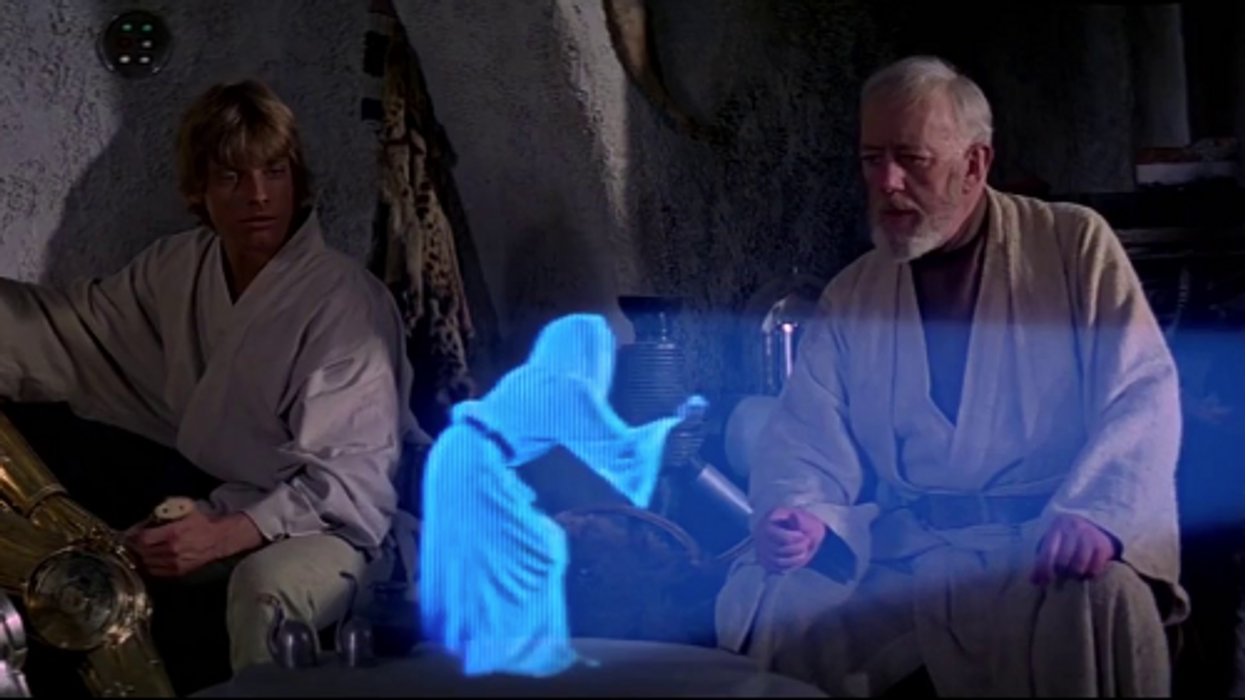What is a MacGuffin? (Definition and Examples)
What is a MacGuffin? In short: it's the reason you're watching the movie.

'Star Wars'
A MacGuffin is a term used in film and literature to describe an object, device, or event that serves as the trigger for the plot, but which itself is not really important to the overall narrative.
The MacGuffin is often what the protagonist is after, but its specific nature is inconsequential to the story's outcome. The importance of a MacGuffin lies not in what it is, but in how it motivates the characters and advances the plot.
It's a great concept that helps you accomplish your story goals in a compelling manner.
Hitchcock Explains What a MacGuffin Iswww.youtube.com
What is a MacGuffin To The Man Who Popularized The Concept
The MacGuffin is a powerful storytelling tool because it provides a clear objective or goal that drives the characters and the plot, even if it ultimately has little to do with the story's themes, character development, or resolution.
Its effectiveness lies in its ability to engage the audience in the narrative, keeping them interested in the outcome of the pursuit.
Alfred Hitchcock had a lot to say about the idea.
"...the thing that the characters on the screen worry about but the audience doesn't care about."
Originally coined by Alfred Hitchcock, this concept is one of those things that's easy to spot but difficult to explain—like, say, the Nickelback fandom.
Most understand it as an important element that serves the story in some capacity, but apart from that, their definition gets a little hazy, but this video essay by ScreenPrism demystifies the Hitchcockian concept once and for all, and even offers George Lucas' alternative meaning for the term for comparison.
What is a MacGuffin? (Definition and Examples)
Here is how Hitchcock himself put it:
[A man] says, "Well, what is a MacGuffin?" You say, "It's an apparatus for trapping lions in the Scottish highlands." Man says, "But there are no lions in the Scottish highlands." Then you say, "Then that's no MacGuffin."
Lotsa help there, Hitch...
He does give a pretty good explanation when he describes it as "the thing that the characters on the screen worry about but the audience doesn't care about."
So, it is a plot device that acts as a catalyst to drive some of the action in the story.
A couple of great examples are the stolen money that motivates all of Marion Crane's actions in Psycho, or the Heart of the Ocean in Titanic. These are known as "pure MacGuffins" because they follow Hitchcock's strict criteria: they must be incredibly important to the characters, but quite vague and meaningless to the story itself.

However, George Lucas' interpretation of the plot device is slightly different.
How About A Different Definition?
To Lucas, it is still an object/prop that acts as a plot device, but it's just as important to the audience as it is to the characters. Things like the ring in TheLord of the Rings, the Horcruxes in the Harry Potter series, and the Ark of the Covenant in Raiders of the Lost Arkare great examples of Lucas' version.
A kind of a classic example of one might a briefcase. Just an object, or prop, that has a secret in it or that people are after. But thinking of it as a prop might help you in relation to your art department.
Many times new filmmakers won't be as intentional as they could be with the objects that appear on screen, but props can be used in so many pivotal ways, whether to bring some realism to your scene or add some nuance to your character.
More Examples from Hitchcock
In Notorious, the MacGuffin is uranium ore stored in wine bottles.
Vertigo has the necklace.
Rear Window has a suspected murder committed across the courtyard.
The Lady Vanishes has a coded message in a piece of music.
In Dial M For Murder it's a spare apartment key.
Notice how in some of these instances it is something you could watch the movie and not even remember. While in other instances, like Rear Window, it looms large over every single scene.
Either way can be effective so long as the plot device is driving the narrative forward.
More Famous Examples
- "The Maltese Falcon" in The Maltese Falcon (1941): The statue of the Maltese Falcon serves as the MacGuffin in this classic film noir. Various characters are willing to lie, cheat, and kill to possess it, driving the plot, though the statue's value is more symbolic than anything else.
- The Briefcase in Pulp Fiction (1994): Quentin Tarantino's "Pulp Fiction" features a briefcase whose contents are never revealed, but numerous characters go to great lengths to acquire it. Its contents are immaterial; what matters is how its pursuit shapes the story.
- The Ark of the Covenant in Raiders of the Lost Ark (1981): In this iconic adventure film, Indiana Jones searches for the Ark of the Covenant. While the Ark has historical and religious significance, its role in the film is primarily to propel the action and plot forward.
- R2-D2 in Star Wars: A New Hope (1977): The droid R2-D2 could be considered a MacGuffin in the original "Star Wars" film, as it carries the Death Star plans that everyone in the film is after. The plans themselves are less important than the chase and the conflicts they instigate.
- Rosebud in Citizen Kane (1941): The dying word "Rosebud" of Charles Foster Kane kicks off an investigation into its meaning, driving the entire narrative. While it is revealed to have personal significance to Kane, the journey to understanding "Rosebud" is more about exploring his life than the object itself.
What is a MacGuffin?www.youtube.com
When Macguffins are characters
Yes, they can characters. Let's start off with how the Star Wars franchise does this.
There is an interesting case to be made that The Empire Strikes Back has Darth Vader as its protagonist, with Luke Skywalker himself as the all-consuming plot device.
In either case, the sequel The Force Awakens certainly turns the Luke character into a traditional example.
The Hangover has the groom, who they lost in the night they can't remember. People loved the Hangover, but the genius behind its success is having such a clever and creative plot device.
It's a great example because the entire plot, and all the comical situations, arising out of that simple set up. We went out partying and we lose the groom.
Private Ryan fits the bill in Saving Private Ryan. And the characters we follow aren't too thrilled about it either.
Colonel Kurtz does it in Apocalypse Now. Can you really have a better one than Marlon Brando?
Wrapping Up What is a MacGuffin? (Definition and Examples)
Now that you know what this thing is (and that it isn't a McGuffin), be sure to tell everybody who asks you about it the whole "trapping lions in the Scottish highlands" thing," because life isn't fair.
But what you can really do with this knowledge is use a creative plot device idea to launch your next script. Once you have a fun one in mind you might be ready to start putting together a treatment.
When you really think about it, this could be the most important single element to your story. Without it, there isn't much of a plot.














